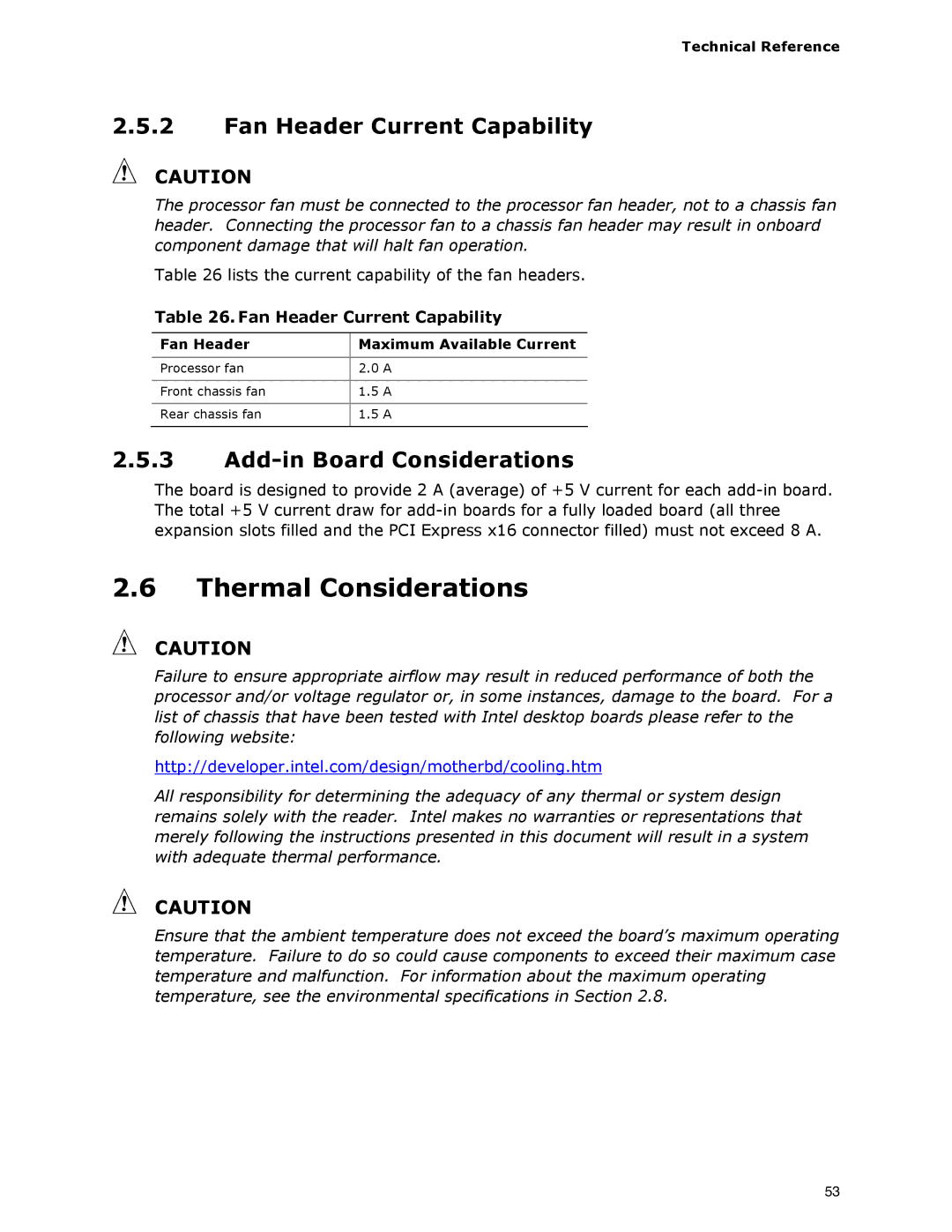Technical Reference
2.5.2Fan Header Current Capability
CAUTION
The processor fan must be connected to the processor fan header, not to a chassis fan header. Connecting the processor fan to a chassis fan header may result in onboard component damage that will halt fan operation.
Table 26 lists the current capability of the fan headers.
Table 26. Fan Header Current Capability
Fan Header | Maximum Available Current |
|
|
Processor fan | 2.0 A |
|
|
Front chassis fan | 1.5 A |
|
|
Rear chassis fan | 1.5 A |
|
|
2.5.3Add-in Board Considerations
The board is designed to provide 2 A (average) of +5 V current for each
2.6Thermal Considerations
CAUTION
Failure to ensure appropriate airflow may result in reduced performance of both the processor and/or voltage regulator or, in some instances, damage to the board. For a list of chassis that have been tested with Intel desktop boards please refer to the following website:
http://developer.intel.com/design/motherbd/cooling.htm
All responsibility for determining the adequacy of any thermal or system design remains solely with the reader. Intel makes no warranties or representations that merely following the instructions presented in this document will result in a system with adequate thermal performance.
CAUTION
Ensure that the ambient temperature does not exceed the board’s maximum operating temperature. Failure to do so could cause components to exceed their maximum case temperature and malfunction. For information about the maximum operating temperature, see the environmental specifications in Section 2.8.
53
